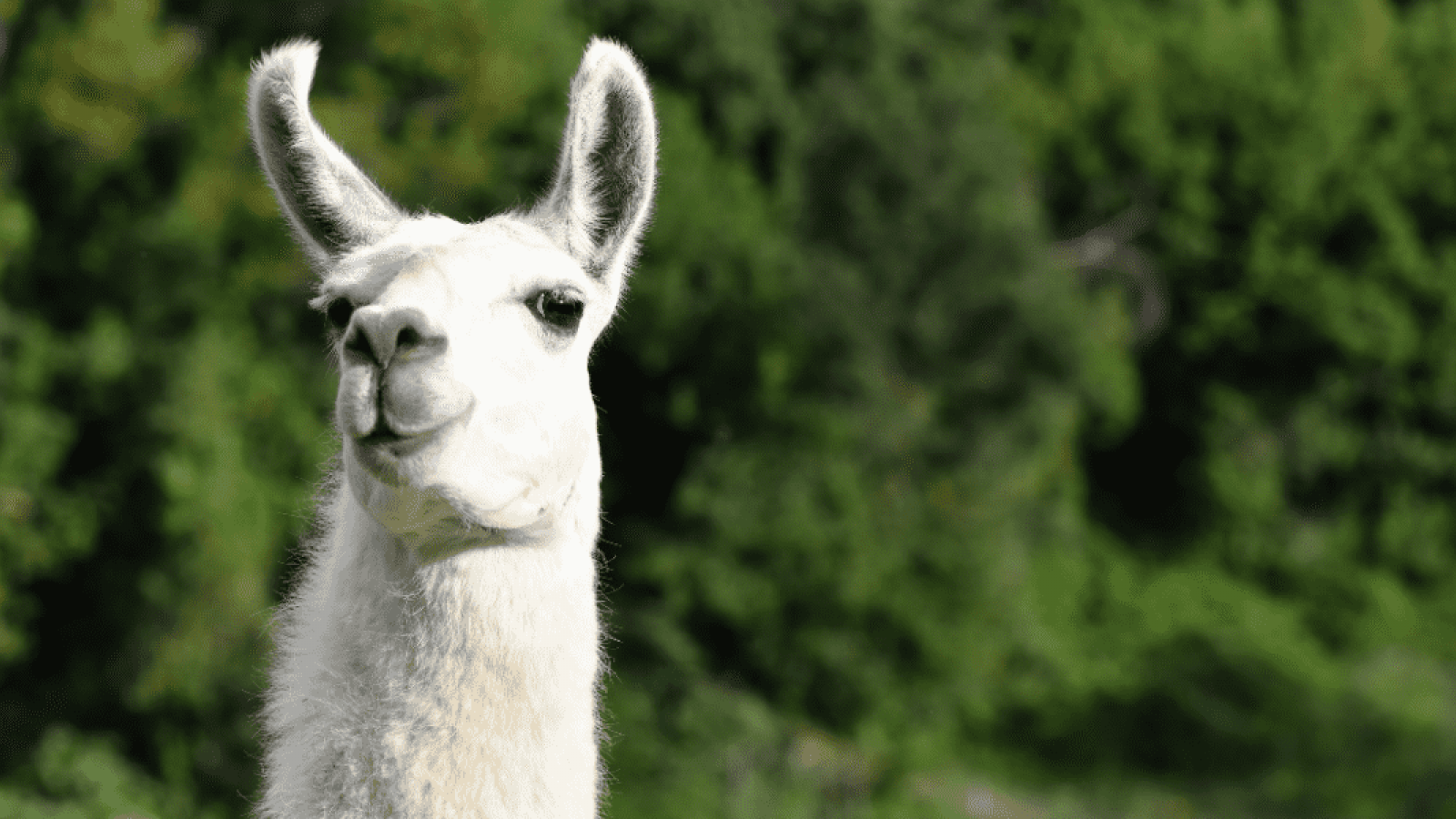
Llamas (Lama glama) belong to the family Camelidae (camel) and are closely related and often mistaken for alpacas, another member of the camel family. They are large animals that grow to an average height of 119cm and can weigh up to 113 kg. Llamas are herbivores who chew and regurgitate their food in a similar manner to cows. Unlike cows, they can survive with only small quantities of water. Their diet consists of different types of plant material. Llamas are rarely used in animal research and make up a negligible percentage of animals used in Great Britain.
Why are llamas used in research?
Llamas have antibodies that are unique compared to most mammals including humans. As well as the common four-chain antibodies found in most mammals (two heavy chains plus with two light chains), llamas have antibodies that are formed of only two long chains. The unique structure of these smaller antibodies has been used in experiments to neutralise various types of viruses, including HIV, that the large antibodies usually found in mammals cannot.
What types of research are llamas used in?
Llamas’ small and unique antibodies have made them especially interesting to virologists. The unique antibodies present in llamas have proved to be better at latching on to receptors on the human cells than current human HIV vaccines. Research conducted by experts around the world showed that llamas possess various types of antibodies that all work together, effectively neutralising all 60 HIV strains the researchers tested. Llamas’ antibodies continue to play a crucial role in the fight against HIV. Nanobodies, which are created from antibodies, have also been used as diagnostic tools for early detection of the virus.
Nanobodies, which can be made from small antibodies are also serving as a potential treatment for patients with severe Covid-19. Scientists have taken antibodies from a llama called Fifi. Similar to HIV, the nanobodies made from her antibodies are able to bind tightly to the SARS- COV-2 virus and therefore not allowing the virus to enter the human cell.
How are the llamas looked after?
The use of animals in research is highly regulated, an important part of that regulation is ensuring the animals are housed and cared for correctly. Llamas used in medical research are housed outdoors in similar condition to farms and in the wild. As they are primarily used in antibody research, only blood samples need to be extracted so they can be kept in standard large animal housing and don’t need to be confined.
References
HIV and llamas: https://eu.usatoday.com/story/news/world/2015/02/23/lima-peru-llama-aids-hiv/23884381/
https://www.sciencedaily.com/releases/2014/12/141218141002.htm
Covid: https://www.ox.ac.uk/news/2020-07-13-engineered-llama-antibodies-neutralise-covid-19-virus
Fifi the Llama: https://www.reading.ac.uk/news-and-events/releases/PR841587.aspx
Llamas: https://www.nationalgeographic.com/animals/mammals/l/llama/
Llamas: https://www.britannica.com/animal/llama
Llamas and Alpacas: https://www.britannica.com/story/whats-the-difference-between-llamas-and-alpacas
3 facts about llammas
1. Llamas can communicate by humming
LLamas can make a "closed-mouth drone". This can range in its urgency and tone and it's believed that its used to communicate danger between llamas.
https://modernfarmer.com/2015/09/important-question-what-sound-does-an-alpaca-make/
2. Llamas are used in HIV/AIDS research
Research has shown that llamas produce a unique antibodies that can work together to neutralize the 60 types of HIV strains they were tested against. Researchers pin down their effectiveness to their different combinations of long and short chains and how they bind to different parts of the virus.
http://www.animalresearch.info/en/designing-research/research-animals/llama/
Similar to their relarives, the camel, llamas can be used to pack load. In fact, they have been used people in the Andes mountains for a long time. However, when you over load a llama, it will lie down or spit and lie down and refuse to move until the load is lifted or lessened.



